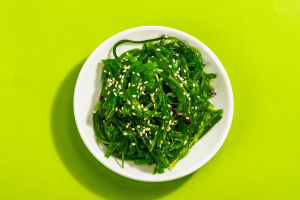Winter is the season when oranges take the spotlight, and the market offers a dazzling array of options.
It can be overwhelming for consumers to choose from the wide variety of oranges available today, especially when compared to the limited options we had as children. In the past, we could only enjoy two or three types of oranges during the winter season, and determining the exact variety was often difficult.
However, with the advancement of orange planting and cultivation technologies, we now find ourselves faced with an abundance of choices such as sugar oranges, honey oranges, mandarin oranges, and Mogu citrus, among others. Each orange looks appealing, making it a challenge for consumers to make a decision.
Sugar oranges, also known as October oranges, are relatively small fruits with a flat and round shape. They have a distinctive bump on the top and a depression at the bottom. The color of sugar oranges is vibrant orange-red, and they are known for their exceptionally thin skin that easily peels off.
The flesh of sugar oranges is delicate, juicy, and incredibly sweet, with little to no acidity. Additionally, most sugar oranges are seedless. The thin skin of sugar oranges breaks easily when bitten into, providing a delightful burst of flavor.
This variety is considered a traditional local specialty in several regions, including Luocheng, Yunfu, Guilin, Xilin, Deqing, Huaiji, Guangning, Sihui, Fengkai, and Xinyi. If you prefer oranges with thin, juicy skin and a sweet taste without any sourness, sugar oranges are the perfect choice for you.
Another popular variety in recent years is the Wogan orange. This hybrid variety is a cross between the "Temple" orange and the "Dancy" red-orange. Wogan oranges are medium-sized, weighing approximately 100g to 200g per fruit.
Due to their hybrid nature, Wogan oranges offer a delightful combination of characteristics. They have tender flesh, are juicy, and possess a balanced sweet and sour taste reminiscent of red tangerines.
Furthermore, Wogan oranges emit a pleasant aroma. These oranges have ample moisture content, high sweetness, a subtle hint of acidity, firm and elastic skin that is easy to peel, and vibrant, oily red skin. Their juicy flesh and overall exceptional taste make Wogan oranges a highly sought-after variety.
Mogu citrus, on the other hand, is a hybrid variety developed by the Miami Agricultural Experiment Institute in Florida, USA. The fruits of Mogu citrus are flat and round, displaying a neat shape with smooth orange skin.
Each fruit weighs between 150g and 200g. Mogu citrus bears a striking resemblance to Wogan oranges, making it difficult for many people to tell them apart. However, there are slight differences between the two.
Mogu citrus boasts a deeper red color and a brighter peel. It also tends to be sweeter overall. Nonetheless, both varieties offer a similar taste profile, making them equally enjoyable choices.
In addition to their culinary value, orange peels have various practical uses in daily life. Oranges are not only great for cleaning purposes, but the peels can also be used to remove rust from porcelain. Moreover, they possess deodorizing and fertilizer properties.
It is important to note that most oranges available in the market are soaked in preservatives after being harvested by farmers to extend their shelf life.
While these preservatives have no direct effect on the flesh of the fruit, the residual chemicals on the orange peel are challenging to wash off with water alone. Ingesting oranges with preservative residue can pose health risks, so it is advisable to exercise caution.


